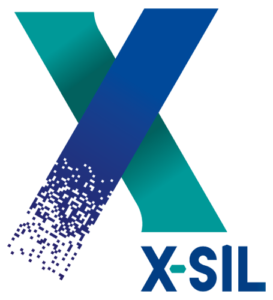Health & Safety (US)
- Home
- Health & Safety (US)
Investing in a Safer Working Environment
Silica and Cristobalite, a thermally processed form of silica, have been fundamental
components of investment casting powder.
Typically they make up 70-80% of the formulation, and it has not been possible to
manufacture a product that works without these two components. Silica also known as Silicon Dioxide or Quartz, is a natural substance found in most rocks, sand and clays. Silica is a common component in many products used on a daily basis around the world.
Silica dust is only harmful when it’s inhaled deep into your lungs, where oxygen is taken up into the blood. In simple terms sitting on a sandy beach shouldn’t cause any respiratory harm because any sand particles breathed in will generally be much too big to go beyond your nose or upper airways. But as a very fine airborne dust, silica can be dangerous. It’s the respirable fraction that is hazardous.
Exposure to Respirable Crystaline Silica (RCS) without adequate dust control measures over a long period can cause fibrosis (hardening or scarring) of the lung tissue with a consequent loss of lung function. This condition is more commonly known as Silicosis. Silicosis is a long latency disease which means that it may take a number years after significant exposure for loss of lung function to become prevalent.
Sufferers are likely to have severe shortness of breath and may find it difficult or impossible to walk even short distances or upstairs. The effect continues to develop after exposure has
stopped and is irreversible. Sufferers usually become house or bed-bound and often die prematurely due to heart failure. Silica may also be linked to lung cancer and studies indicate that smoking in conjunction with exposure to RCS can significantly increase risk levels of lung cancer development.
WHAT IS THE RISK AND HAZARD CLASSIFICATION OF X-SIL INVESTMENT POWDER FOR EUROPE AND THE UK
X-SIL is NOT classified as a hazardous substance in accordance
with the Globally Harmonized Standard (EC) No. 1272/2008 for
hazardous substances under the CLP regulations and requires
the following H&S statements on the product.
Required GHS Labels and Statements
| Hazard Label: | Not Applicable |
| Signal Word: | Not Applicable |
| Hazard Class: | Not Applicable |
| Precautionary: | Not Applicable |
| Other Hazards: | None. |
WHAT IS THE RISK AND HAZARD CLASSIFICATION OF X-SIL INVESTMENT POWDER FOR THE UNITED STATES OF AMERICA
Due to different health and safety regulations worldwide related
to the exposure limits of Respirable Crystalline Silica (RCS), the
below Hazard classification is required with X-SIL specifically
for the United States of America due to the classification of
the product.
In the United States if a product contains more than 0.1% total silica content, regardless of its particle size (i.e. respirable or not), it is classified as a carcinogen and therefore requires a carcinogenic warning label.
| Hazard Label: |  |
| Signal Word: | DANGER |
| Hazard Class: | H350: May cause cancer if inhaled. Causes damage to the lungs, the immune system and the kidneys through prolonged or repeated exposure if inhaled. |
| Precautionary: | P201: Obtain special instructions before use. |
| Other Hazards: | None. |



